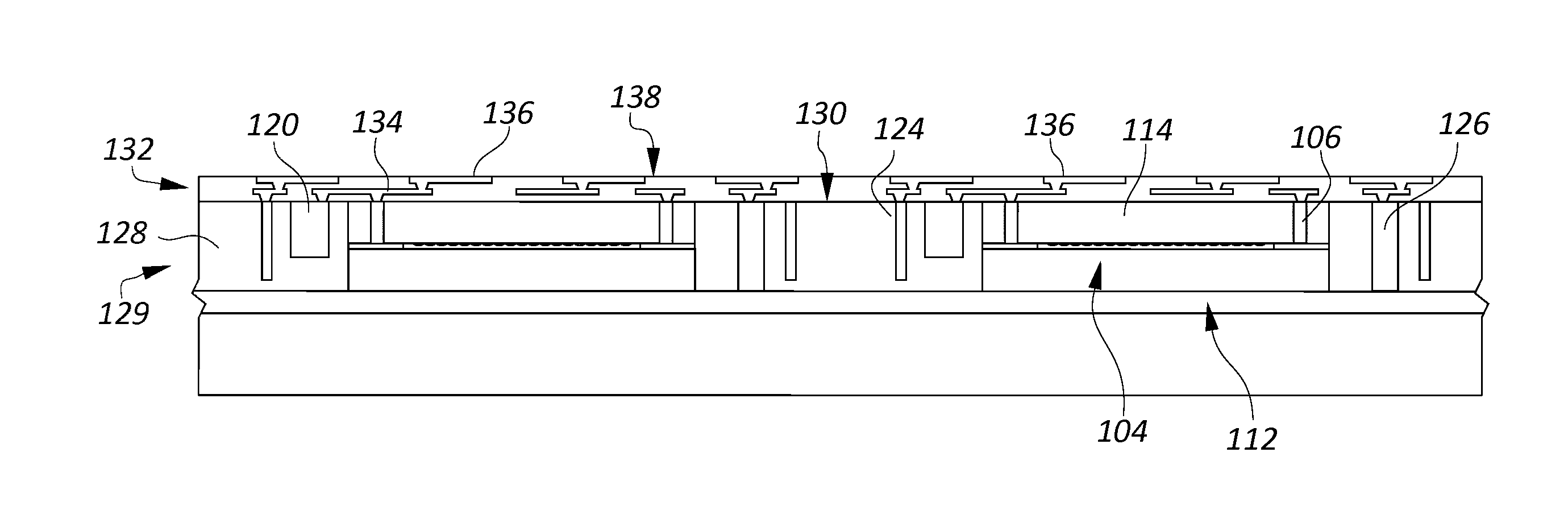Wafer level optical sensor package and low profile camera module, and method of manufacture
a technology of optical sensor and low-profile camera, applied in the field of wafer-level packages, can solve the problems of incompatibility with the correct operation of optical sensor, less desirable use for small electronic devices, and potential light leakag
- Summary
- Abstract
- Description
- Claims
- Application Information
AI Technical Summary
Benefits of technology
Problems solved by technology
Method used
Image
Examples
Embodiment Construction
[0024]While the prior art example of FIG. 2 has a reduced height, relative to the example of FIG. 1, the inventors have recognized that there are a number of problems that can be associated with the second example. First, the associated semiconductor wafer and glass cover must be thinned to their final thicknesses before the wafer is singulated into individual dice. However, If they are too thin, they become extremely fragile, and can break during singulation. Also, handling of the glass and die assembly by assembly workers or automatic machinery used to assemble the camera module can easily damage them. Additionally, planarity becomes a problem, because the thinned die can be flexed slightly during assembly, resulting in an optical sensor that does not function properly or produces distorted images. Another problem is light leaks. If the lens assembly is not perfectly light tight, or if any light scatter occurs inside the lens assembly, the light can be transmitted from the edge of...
PUM
 Login to View More
Login to View More Abstract
Description
Claims
Application Information
 Login to View More
Login to View More - R&D
- Intellectual Property
- Life Sciences
- Materials
- Tech Scout
- Unparalleled Data Quality
- Higher Quality Content
- 60% Fewer Hallucinations
Browse by: Latest US Patents, China's latest patents, Technical Efficacy Thesaurus, Application Domain, Technology Topic, Popular Technical Reports.
© 2025 PatSnap. All rights reserved.Legal|Privacy policy|Modern Slavery Act Transparency Statement|Sitemap|About US| Contact US: help@patsnap.com



